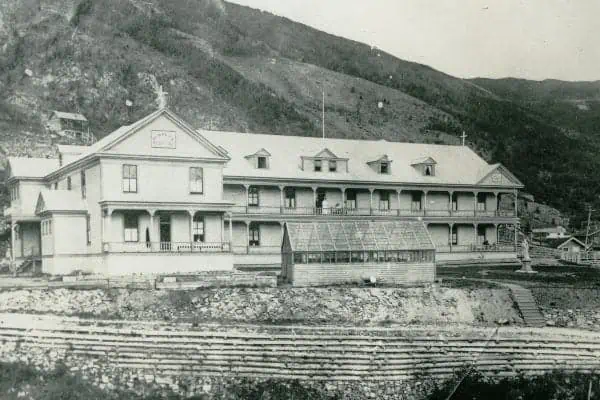The Yukon Gold Panning Championships were held on the well-used greensward between Front Street and the dike. The greensward wouldn’t be here if the dike wasn’t built.
The dike was a controversial pile of rock and dirt when it was erected in 1987. Many conceded it was necessary, and long overdue.
But no one said it was pretty.
Dawson City is an example of the human tendency to inhabit flood plains; it’s located at the confluence of the Klondike and Yukon rivers, and some parts of town are barely above the level of the groundwater table. It’s no surprise the town has flooded 22 times.
Here, outgoing ice jams downstream from Dawson cause the Yukon River to flood into the town.
“Worst Floods Known Submerge City” was a headline in the Dawson Daily News on May 14, 1925, when a metre of water covered much of the town.
In 1944, another major jam left Dawsonites knee-deep in water. The Royal Canadian Air Force was called in to bomb the jam, to no avail.
Early attempts to block the rising water always seemed to be too little and too late. Front Street was raised in 1959 to keep the water out, but that proved futile because there were several floods during the 1960s. So the government raised the level of the street again.
The massive 1979 flood proved these efforts were also ineffective. Water cascaded into town to a depth of two metres in some places, running all the way up to Sixth Avenue. It required disaster assistance for some 270 damage claims, worth about $6 million in 2009 dollars.
Hydrologists immediately called for the building of a dike, to be at least two metres higher that anything previously attempted.
There was a lot of foot dragging around this; there’s no good excuse offered to explain why it took eight years to get it done.
We haven’t flooded since, though I have seen water to within a metre of the top of the dike several times. It’s supposed to be able to handle a 200-year level event, but last summer the water in the Yukon and Klondike rivers was so high that it backed-up in some of the storm drains in the south end of town, creating massive puddles along the streets.
Though the dike wasn’t popular at first, as the landscaping improved, so did public opinion. While it blocks the view of the river from the street, the top of the dike is an excellent trail with a great view.
Interpretive panels and benches are the newest addition to the trail. Parks Canada relocated its signage related to the SS Keno to the dike trail, and the Princess Sophia Memorial can be found a bit further north.
When the Tr’ondëk Hwëch’in built the Dänojà Zho Cultural Centre, they snuggled it close to the dike. The trail winds smoothly around the building’s west side.
To the north we now have an area for the farmer’s market, the gazebo, a town clock, a picnic shelter, and a place for paragliders to land after they jump off the Midnight Dome.
by: Dan Davidson
Town clock garden – The garden area around the town clock is the most recent landscaped area along the dike.




